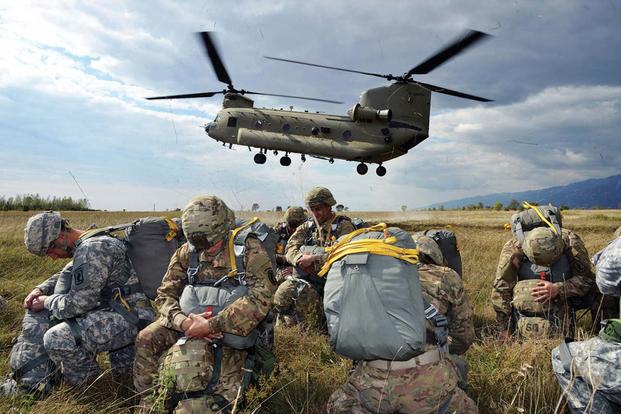A week after the Army pledged nearly $4 billion on its future attack helicopter effort, Army Secretary Mark Esper said he wants aircraft makers to start planning for the service's next heavy-lift helicopter as a replacement for the CH-47 Chinook.
In the near term, the Army's Future Vertical Lift program has prioritized building the Future Attack Reconnaissance Aircraft (FARA), followed by the Future Long Range Assault Aircraft (FLRAA, pronounced "flora"), and fielding both next-generation helicopters by 2028.
The service recently awarded $3.9 billion worth of contracts to five defense firms to build prototype aircraft of the Future Attack Reconnaissance Aircraft.
The Army's decision in the fiscal 2020 budget proposal to stop buying CH-47s for the conventional force has raised eyebrows, but Esper says the service doesn't need to buy any more CH-47s.
Related: Army Secretary Defends Decision to Cut CH-47 Chinook Program
"The CH-47 is a very good aircraft," he said Tuesday at the Brookings Institution, adding that the workhorse will continue to serve the Army for another "20-to-30 years."
"What I don't have right now in my inventory of aircraft is an aircraft built for the future attack reconnaissance mission," Esper added.
But the Army is pushing forward on this front. The service awarded the following FARA contracts April 23:
- Sikorsky Aircraft Company: $938,400,000
- Bell Helicopter Textron Inc.: $790,830,873
- Boeing Company: $772,274,333
- Karem Aricraft: $738,440,923
- AVX Aircraft Company: $732,456,303
The Army hopes to conduct flight testing of prototype aircraft in fiscal 2023. That same year, it "may select a performer for entry into a subsequent full system integration, qualification and production phase," according to the original solicitation.
FARA will be designed to "penetrate air defense systems, get deep behind the enemy and do a number of things -- either deploy drones or call for fires or direct other aircraft to clear the airspace," Esper said.
He added that the Army also needs the Future Long Range Assault Aircraft to replace the UH-60 Black Hawk.
But Esper also said he doesn't want the aircraft industry to wait until 2030 to start the design process for the Army's next future heavy vertical lift helicopter.
"What I want ... is the for the rotorcraft industry to start thinking about what is the future of heavy vertical lift and what might that system look like. It may be version of the CH-47, I don't know," he said. "I need an aircraft that can survive in that domain in the future. I need greater speed, greater range, greater payload because I can't have FARA and FLRAA zipping down the battlefield, and meanwhile our other aircraft in the inventory just can't keep up."
Esper told defense reporters that he did not know whether the Army would help fund long-range efforts to design a next-generation heavy-lift aircraft, "but really where I need [aircraft firms'] heads to be is thinking future heavy vertical lift, not about how do we maintain what we have now and make upgrades here or there."
"I really want them to think aggressively, boldly, about what the future may hold," he said.
-- Matthew Cox can be reached at matthew.cox@military.com.













